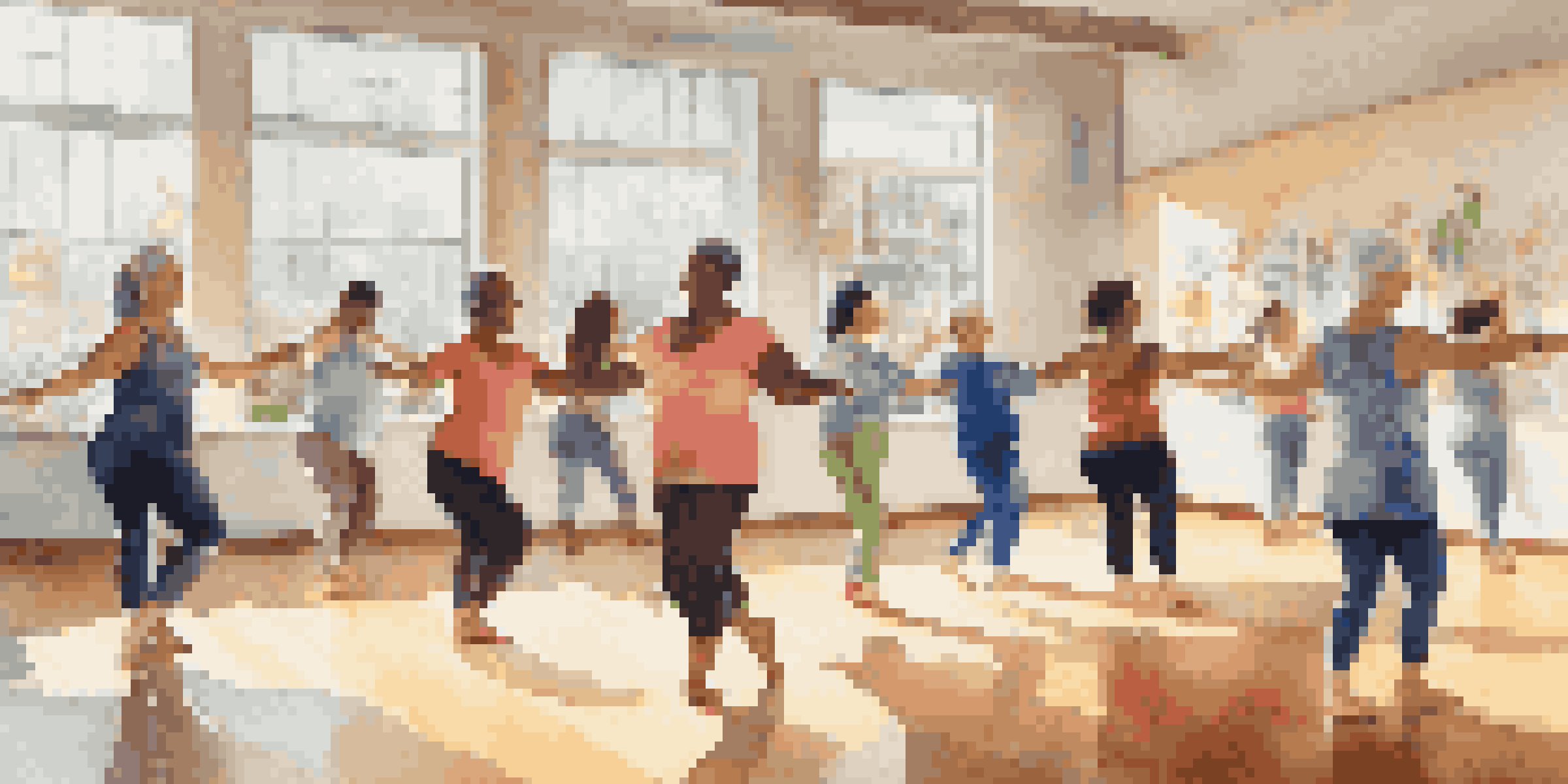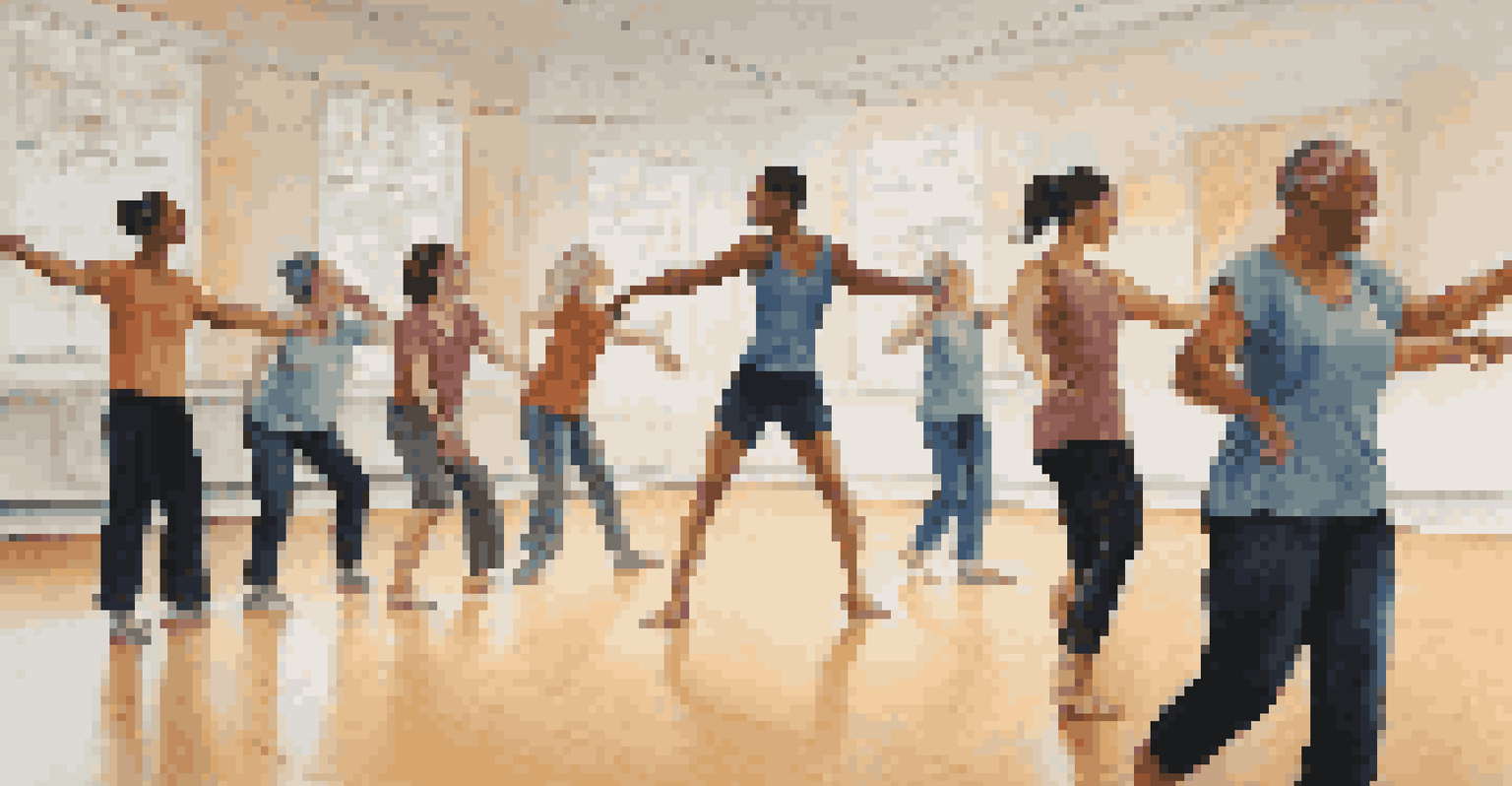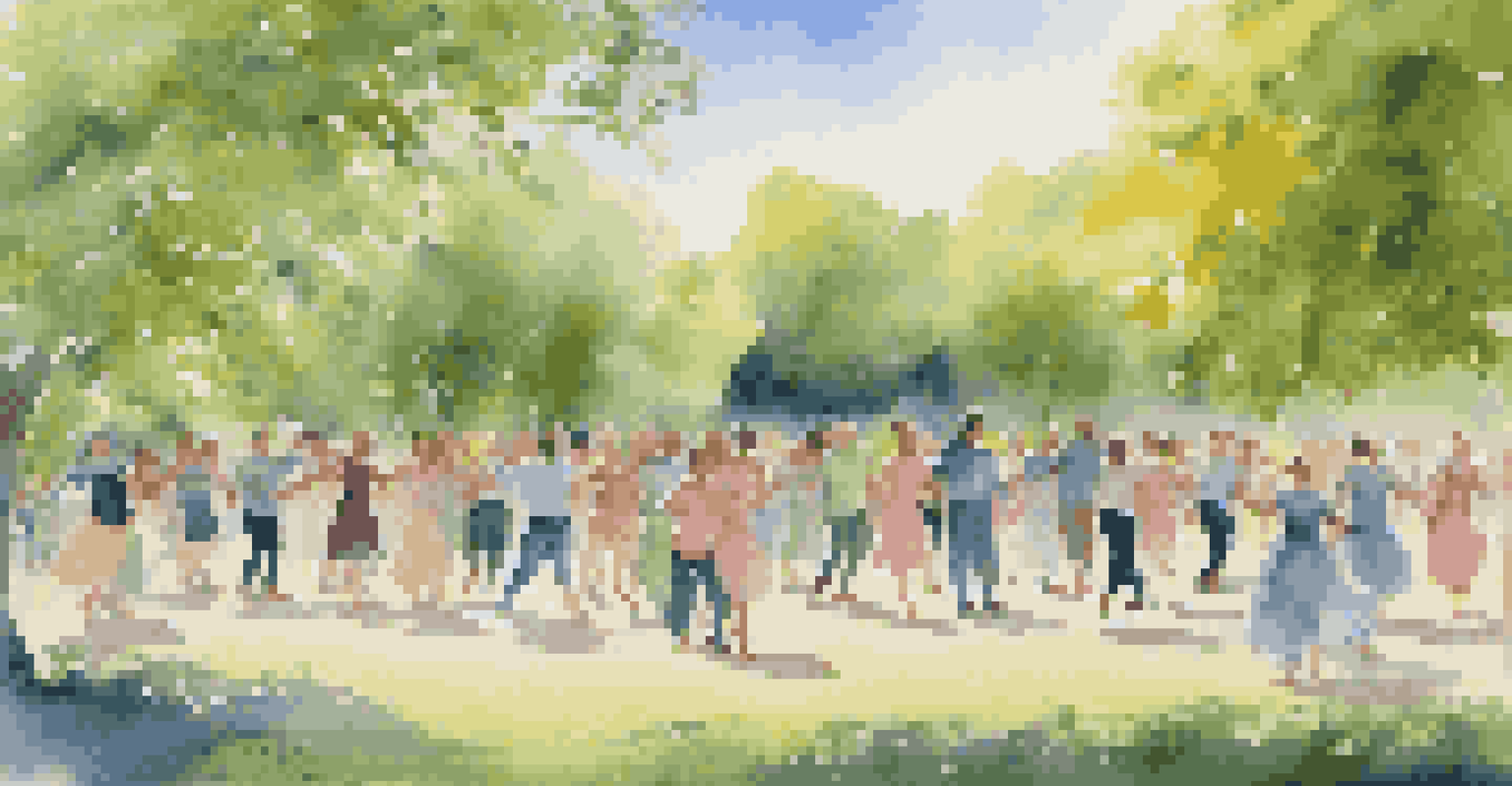Exploring Dance as a Tool for Neurological Rehabilitation

Understanding Neurological Rehabilitation and Its Importance
Neurological rehabilitation focuses on helping individuals recover from injuries or disorders of the nervous system. This can include strokes, traumatic brain injuries, or conditions like Parkinson's disease. The goal is to restore function and improve the quality of life for patients, making it a critical aspect of healthcare.
Dance is the hidden language of the soul.
Traditional approaches often involve physical therapy and medication, but incorporating creative methods can enhance recovery. Dance, an expressive form of movement, has emerged as a promising complementary therapy. It engages the body and mind, fostering both physical and emotional well-being.
As we explore this topic, it’s essential to understand how movement-based therapies like dance can stimulate neural pathways. By activating different parts of the brain, dance can encourage recovery in ways that more conventional therapies may not.
The Science Behind Dance and Brain Function
Dance involves coordinated physical movements that require concentration, rhythm, and balance. This complex activity activates various regions of the brain, including those involved in motor skills and memory. Research shows that engaging in dance can lead to neuroplasticity, which is the brain's ability to reorganize itself by forming new neural connections.

For instance, studies have demonstrated that individuals with Parkinson's disease experience improvements in their motor functions and overall mood through dance programs. This effect is partly due to the rhythmic nature of dance, which can help in retraining muscle memory and improving coordination.
Dance Enhances Neurological Recovery
Incorporating dance into rehabilitation can stimulate neural pathways and improve both physical and emotional well-being.
Additionally, dance can increase dopamine levels, a neurotransmitter associated with pleasure and reward. This boost can enhance motivation and engagement in rehabilitation, making the process more enjoyable and effective for patients.
How Dance Can Enhance Physical Rehabilitation
Dance provides a unique opportunity for physical rehabilitation by incorporating strength, flexibility, and endurance training into a fun and social activity. Unlike traditional exercises that may feel monotonous, dance invites creativity and expression, which can lead to greater adherence to rehabilitation routines.
Movement is a medicine for creating change in a person's physical, emotional, and mental states.
For example, patients may engage in styles like ballroom or hip-hop, which require various movements that promote muscle strength and coordination. This variety can keep individuals motivated and make them feel more connected to their bodies during recovery.
Moreover, group dance classes can foster social interaction, reducing feelings of isolation that often accompany neurological conditions. This social aspect can significantly contribute to emotional health, which is just as important as physical recovery.
Emotional and Psychological Benefits of Dance Therapy
Beyond physical benefits, dance therapy offers significant emotional and psychological support. Many individuals facing neurological challenges experience anxiety, depression, or frustration; dance can serve as an emotional outlet. It allows participants to express feelings through movement, which can be incredibly therapeutic.
Research indicates that engaging in dance can elevate mood and reduce symptoms of anxiety and depression. The joy of dancing, combined with the sense of achievement from mastering new skills, can boost self-esteem and resilience during rehabilitation.
Social Interaction Boosts Healing
Group dance classes foster social connections, which can alleviate feelings of isolation and enhance emotional health during recovery.
Additionally, dance fosters a sense of community and belonging, which can be vital for individuals coping with neurological challenges. When people dance together, they share experiences, creating a supportive environment that promotes healing.
Real-Life Success Stories of Dance in Rehabilitation
There are numerous inspiring success stories where dance has played a pivotal role in rehabilitation. One notable example is the Dance for Parkinson’s program, which has helped countless individuals improve their mobility and emotional well-being. Participants often report feeling more empowered and connected to their bodies after engaging in these classes.
Another heartwarming story involves a stroke patient who, after months of traditional therapy, found renewed strength and confidence through dance. The rhythmic movements not only helped restore her motor skills but also reignited her passion for life, illustrating the profound impact dance can have.
These stories highlight that while every rehabilitation journey is unique, dance offers a joyful path towards recovery. They remind us that healing can be multifaceted, and sometimes, finding joy in movement can be just as crucial as physical exercises.
How to Get Started with Dance Therapy
If you or a loved one is considering dance as part of a rehabilitation plan, the first step is to consult with a healthcare provider. They can provide guidance on whether dance therapy is appropriate for your specific needs and conditions. Once you have the green light, seek out local programs or classes designed for individuals with neurological challenges.
Many communities offer specialized dance classes that cater to various skill levels and abilities. Look for programs that focus on inclusivity and adaptability, ensuring that everyone can participate at their own pace. It’s essential to find a supportive environment where individuals feel safe and encouraged to express themselves.
Future of Dance in Therapy Looks Bright
Ongoing research and technological advancements promise to integrate dance more fully into neurological rehabilitation practices.
Additionally, consider exploring online resources or virtual classes, especially if mobility is a concern. There are many platforms offering dance therapy sessions that can be done from the comfort of home, making this therapeutic practice accessible to more people.
Future Directions in Dance and Neurological Rehabilitation
As research continues to evolve, the future of dance in neurological rehabilitation looks promising. We are beginning to see more structured studies that quantify the benefits of dance, leading to greater acceptance within the medical community. This growing body of evidence may pave the way for more integrated treatment plans that include dance as a standard therapeutic option.
Moreover, advancements in technology, such as virtual reality dance programs, could enhance accessibility and engagement for individuals with physical limitations. By harnessing innovative tools, the reach of dance therapy can expand, allowing more patients to experience its benefits.

Ultimately, as we continue to explore the intersection of art and medicine, dance may become an integral part of rehabilitation strategies. This evolution signifies a shift towards holistic care, recognizing that healing is not just about the body but also about nurturing the mind and spirit.